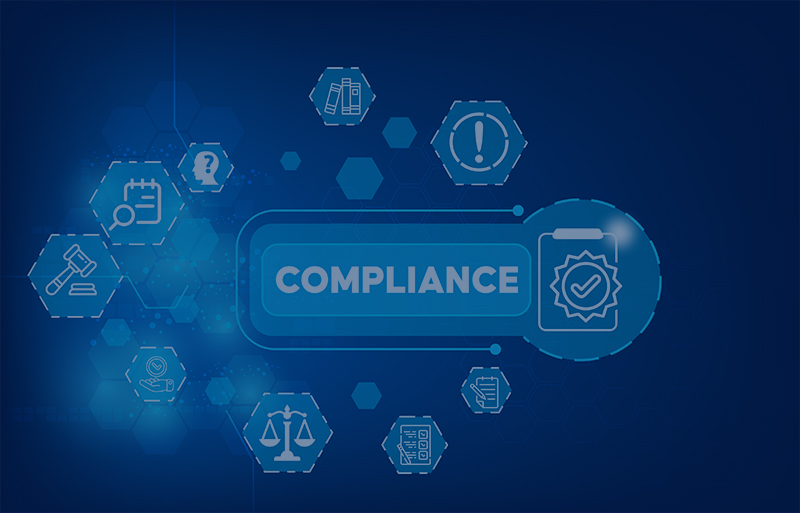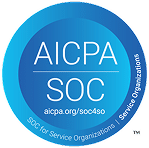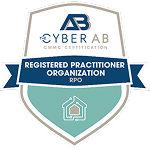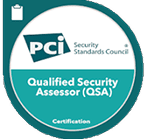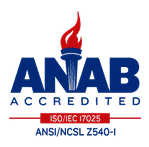The SOC 2 examination process is a pivotal step in assessing an organization’s adherence to stringent security standards. This examination is instrumental in ensuring service providers handle sensitive data carefully, meeting their clients’ trust and security expectations. However, as organizations strive for efficiency and precision in their operations, incorporating software tools into the SOC 2 examination process introduces unique technical, operational, and management risks.
While these tools aim to streamline tasks, automate processes, and enhance overall effectiveness, they also bring forth specific risks that demand careful consideration. Therefore, this article delves into the common risks associated with SOC 2 software tools, explores the implications of leaving these risks unmitigated, and outlines effective strategies for risk management.
Common Risks Associated with SOC 2 Software Tools
Over-reliance on Automation
Organizations often depend heavily on automated processes to streamline operations. However, this reliance poses risks to the examination process. Automation may lead to inaccurate data analysis, potentially resulting in flawed security assessments. Without human oversight, organizations risk making decisions based on misleading information. Thus, it is crucial to balance automation with human judgment to ensure accurate evaluations by SOC 2 service auditors.
Misconceptions about Service Auditor’s Reporting Responsibilities
It is necessary to understand that SOC 2 tools serve as enablers rather than substitutes for the expertise and judgment of service auditors. These tools are designed to streamline certain aspects of the SOC 2 examination process. However, they often lack the critical thinking capabilities or contextual understanding of service auditors, who leverage their expertise to assess the effectiveness of controls, evaluate risk management practices, validate the accuracy and reliability of examination results, and provide independent assurances to stakeholders.
Therefore, addressing misconceptions about service auditors’ reporting responsibilities helps to improve the integrity, accuracy, and credibility of SOC 2 examinations. By recognizing the complementary roles of auditors and software tools, clarifying expectations, and promoting collaboration between service auditors and software vendors, organizations can achieve meaningful assurances and mitigate risks associated with a singular reliance on just the tools for SOC 2 examination and certification.
Self-attestation of SOC 2 Tools
Organizations occasionally face the temptation to self-attest the outputs generated by SOC 2 tools, entailing certain inherent risks. This practice introduces subjectivity and potential bias into the evaluation process, posing challenges to the objectivity and reliability of the examination results:
- Subjectivity in Examination: Self-attestation may lead to subjective examinations influenced by internal perspectives and interests. Without external validation, there is a risk that organizations might interpret SOC 2 tool outputs in a way that aligns with their preferences or operational objectives, potentially compromising the impartiality of the evaluation.
- Potential Bias Risks: Internal teams involved in self-attestation may inadvertently introduce bias due to their familiarity with the organization’s processes and security controls. This familiarity can lead to overlooking certain shortcomings or vulnerabilities in the examination process, diminishing its thoroughness.
- Limited Objectivity: Self-attestation lacks the external objectivity that third-party service auditors bring to the SOC 2 examination process. Independent auditors, by nature, offer an impartial perspective, ensuring a more objective evaluation of the organization’s adherence to SOC 2 standards and the effectiveness of its security controls.
Software Vendor Dependency
In SOC 2 examinations, the relationship between service organizations, software vendors, and CPA firms introduces a complex dynamic that initiates ethical concerns and operational risks. The interdependence between software vendors and CPA firms can have implications for the independence and impartiality of service auditors. As such, it underscores the importance of evaluating software vendor dependencies to maintain the integrity of the examination process.
Below are some risk concerns associated with vendor dependencies:
- Conflict of Interest: The collaboration between software vendors and CPA firms raises ethical questions primarily related to a potential conflict of interest. When a CPA firm is closely tied to a software vendor, there is a risk that the CPA firm’s actions and decisions could be influenced by the interests of the vendor rather than prioritizing the best interests of the service organization undergoing the SOC 2 examination.
- Ethical Implications: The intertwining of vendor interests with the audit process raises ethical questions regarding the independence and integrity of the SOC 2 examination and certification process. CPA firms may face pressure to overlook deficiencies or inaccuracies in the examination process to maintain favorable relationships with software vendors, undermining the credibility and reliability of SOC 2 audits.
- Vendor-Induced Compliance Risks: The software vendor’s policies or practices may introduce newer compliance risks that impact SOC 2 examinations. Changes in the vendor’s compliance stance or data handling practices may require the service organization to adjust its audit processes, thus causing budgetary concerns.
- Erosion of Stakeholder Trust: The perception of a compromised audit process due to vendor dependencies can erode stakeholder trust. Stakeholders, including clients and regulatory bodies, rely on SOC 2 examinations to ensure the security and reliability of services. Any doubts about the independence of service auditors may cast uncertainty on the validity of the examination results.
Mitigation Strategies Worth Considering
- 1. Over-reliance on Automation:
- Balancing Human Oversight: Organizations should implement a comprehensive approach that combines the efficiency of SOC 2 tools with human oversight. Service auditors play a crucial role in verifying automated results and ensuring the accuracy and relevance of data interpretation. Establishing clear protocols for the collaboration between automated tools and human expertise helps maintain the integrity of the examination process.
- 2. Misconceptions about Service Auditor’s Reporting Responsibilities:
- Education and Communication: Organizations should invest in educational programs that clarify the capabilities and limitations of each component. Therefore, clear communication channels between service auditors and software tool providers contribute to a shared understanding of responsibilities. Facilitating collaborative workshops where service auditors and software vendors jointly address misconceptions can foster a collaborative platform for both parties to share insights, align expectations, and enhance the overall effectiveness of SOC 2 examinations.
- Self-attestation of SOC 2 Tools:
- Third-party Validation: Organizations should seek third-party validation to mitigate subjectivity and potential bias risks associated with self-attestation. Independent service auditors bring an objective perspective, ensuring that examinations are impartial and free from internal biases.
- Periodic External Audits: Subjecting internal self-attestation processes to periodic external audits by independent service auditors adds an extra layer of scrutiny. External audits provide an unbiased evaluation of the organization’s self-attestation practices, ensuring continuous adherence to SOC 2 criteria and minimizing potential bias risks.
- Software Vendor Dependency:
- Diversification of Vendors: Organizations should consider diversifying their software vendor relationships to mitigate the risk of conflict of interest and ethical implications. Relying on multiple vendors for different aspects of SOC 2 tools reduces the influence of a single vendor, fostering a more independent and impartial examination process.
- Regular Vendor Evaluations: Periodic vendor policies and process evaluations help organizations stay proactive in identifying and addressing potential risks. Therefore, organizations require mechanisms to adapt their SOC 2 examination processes based on changes in vendor processes, ensuring continuous alignment with SOC 2 criteria.

